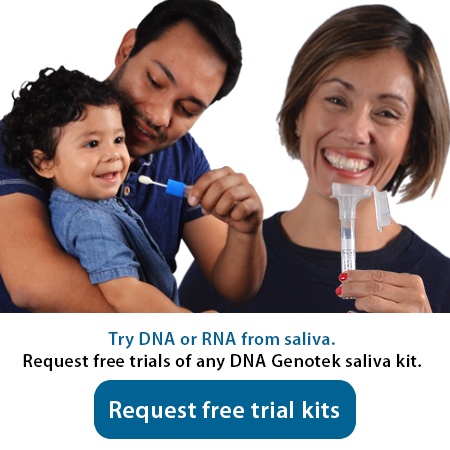2012-09-26
We recently published an article highlighting how to choose the best method for low-throughput DNA extraction for Oragene samples. Today, we examine various options for high-throughput DNA extraction. High-throughput DNA extraction uses an automated, robotic system to provide researchers and clinicians with high quality genomic DNA. The main advantages of this method are less hands-on time, higher consistency and reduced probability for manual errors. High-throughput extraction is generally preferred when there are a large number of samples to be processed, however whether processing a small or a very large number of samples, automation is a great way to gain efficiencies and consistency in results.
Similar to a low-throughput approach, automation typically relies on one of three basic platforms to extract DNA: ethanol precipitation, columns or magnetic beads. When choosing the best platform for your application, there are a few things to keep in mind:
- What do you want the robot to be able to do (flexibility)?
- What throughput do you require (the number of samples processed/day)?
- What are your input requirements for downstream applications?
Flexibility
There are two types of robots for automated extraction: open systems and closed systems. When choosing which robot is right for you, it is important to first consider whether an open system or a closed system would best suit your needs. An open system is designed as a basic liquid handling robot (eg. Tecan Freedom Evo or Hamilton STAR) that is adaptable to many different configurations and is able to work with extraction chemistries purchased from a variety of providers. This type of platform gives tremendous flexibility and allows you to truly customize your extraction process. This type of system can also be configured to perform other lab related liquid handling activities such as aliquotting and PCR set-up.
In contrast, a closed system is designed for specific applications and generally comes with defined protocols and specified chemistries (eg. Chemagic MSM 1 for DNA or RNA and Qiagen QIAsymphony). These robots are designed for specific tasks and often offer a more user friendly interface as they have been fully developed for the specific application of interest using specific reagents.
Required throughput
Determining your required throughput is fairly straightforward. You need to know how large your initial sample is and how many samples you need to process per day. When considering initial sample volume, it is important to note that robotic systems are usually targeted to a specific pipetting range so you need to ensure the robot you choose can handle your sample volume. Most platforms work with a sample aliquot of up to 1mL. If you wish to process an entire 4mL saliva sample, there are a few robots that are up to the challenge including: Qiagen Autopure or Chemagen Chemagic MSM 1 with a 12 or 24 rod head.
One thing to keep in mind is that when you increase the input volume, you also decrease the number of samples you can process in a single run. For example, typical small volume automation can run 96 aliquots of ~250µL or more at a time whereas large volume automation could be limited to 16-24 samples of ~1mL at a time.
Downstream input requirements
The technology used for DNA extraction combined with the input volume and elution volume will have an effect on the extracted DNA sample attributes. For applications where a high DNA yield is required, our experience shows that the highest yield is generally obtained using ethanol precipitation-based approaches such as an open system with DNA Genotek’s prepIT•L2P or Qiagen Autopure. Alternatively, some magnetic bead methods also perform quite well. For applications where DNA quality is most important, consider column- or magnetic bead-based systems.
For more information on how basic technology can affect sample attributes, please refer to “How to choose the best method for low-throughput DNA extraction”. For more information on platforms that have been validated with Oragene samples, please see our White Papers or contact support. We may already have a protocol for the robot you are using.
As always, the best choice for DNA extraction is usually the method that gets you the results you need in the simplest, fastest way. We hope this article helps you make an informed decision when choosing your high-throughput DNA extraction method for Oragene samples.


